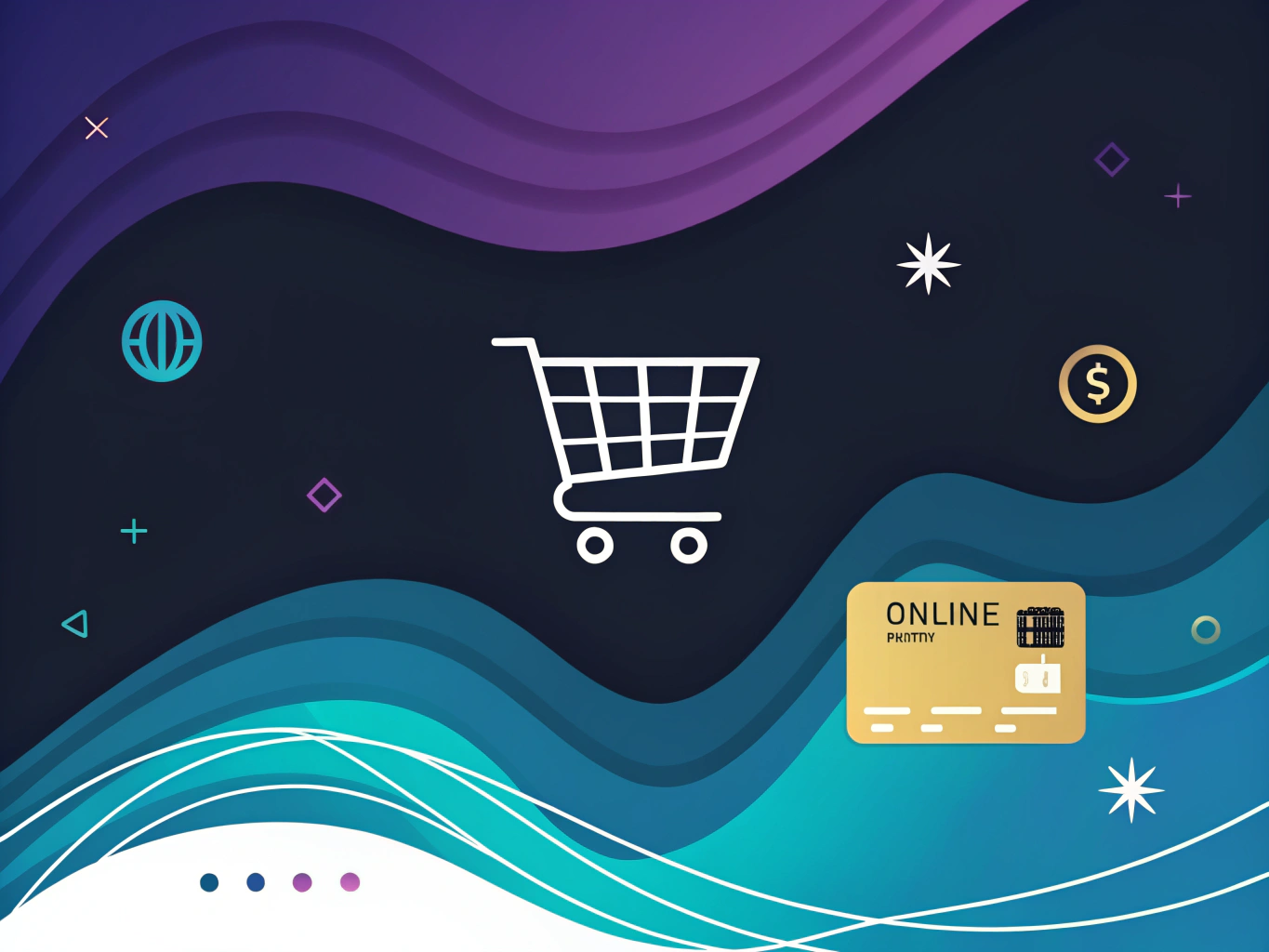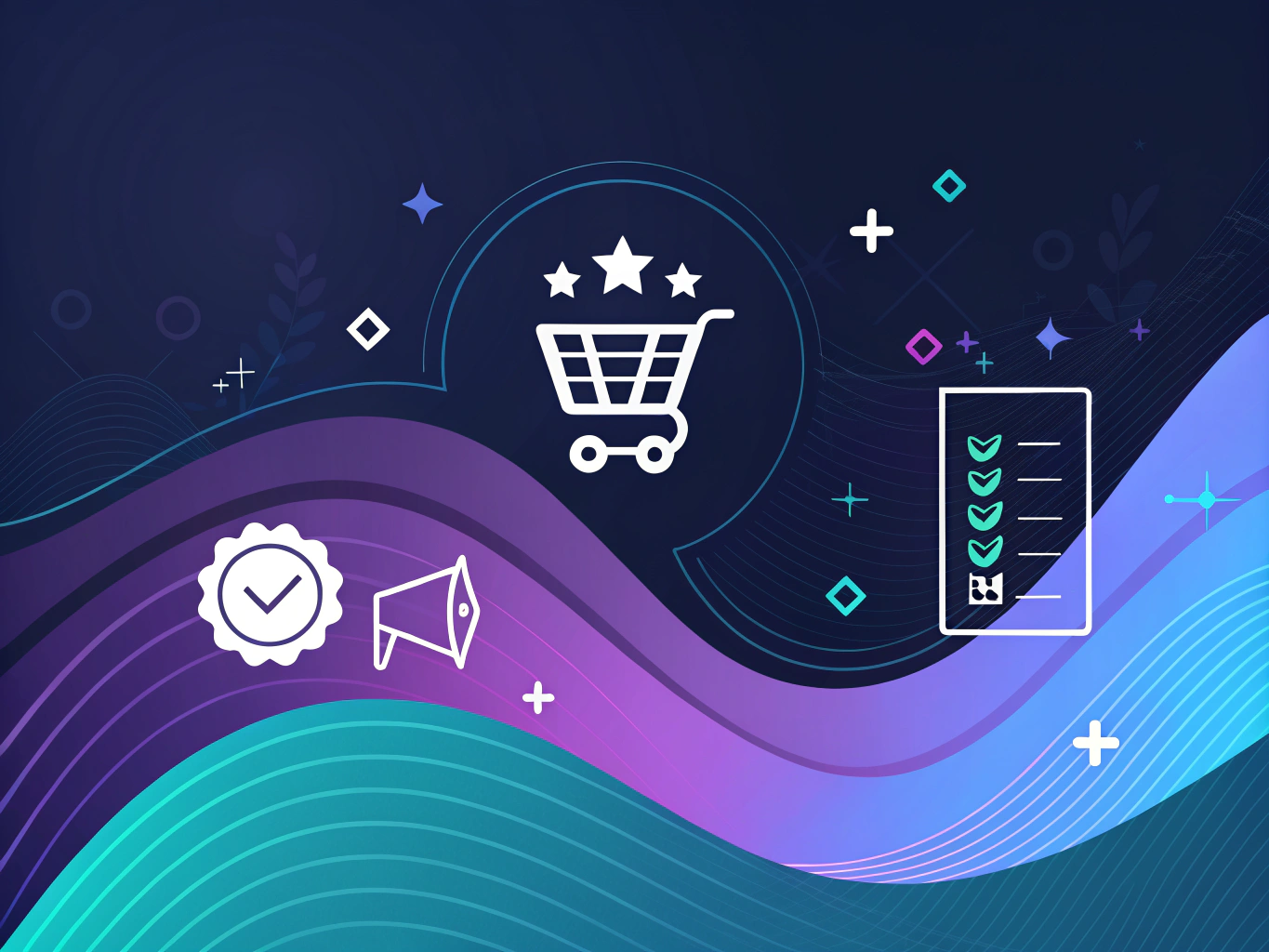The Battle for Amazon’s Most Valuable Real Estate: Understanding the Buy Box
Let’s talk about the most valuable piece of digital real estate in e-commerce – one that drives roughly 80% of all Amazon sales and can make or break your business overnight. I’m talking about the Buy Box, that innocent-looking white box with the “Add to Cart” and “Buy Now” buttons that we’ve all clicked countless times.

But here’s the thing: while most shoppers barely notice it, sellers wage daily wars over this prime digital real estate. Think of it as the penthouse suite of the e-commerce world – everyone wants it, but only a select few get to claim it at any given time.
What is the Buy Box? Breaking Down E-commerce’s Golden Ticket

The buy box meaning is deceptively simple on the surface – it’s the default purchasing option on Amazon product pages. But like most things that appear simple, there’s a whole universe of complexity beneath that clean interface.
Imagine walking into a store where multiple vendors sell the same exact product. Instead of showing you all options at once, the store owner picks one vendor to stand at the front counter while others wait in line. That’s essentially what the Buy Box does – it’s Amazon’s way of saying “we recommend buying from this seller right now.”
The Evolution of the Buy Box
When Amazon first launched its marketplace, it was pretty much the Wild West. Every seller competed on equal footing, and customers had to manually compare options. The introduction of the Buy Box changed everything – it became the algorithmic referee deciding which seller gets the spotlight.
Fun fact: The term “Buy Box” has become so ingrained in e-commerce that it’s spawned its own ecosystem. We’ve got buy box analytics tools, buy box optimization services, and even buy box consultants (yes, that’s actually a thing). It’s like the SEO of the e-commerce world – a whole industry built around understanding and gaming a single algorithm.
The Buy Box Algorithm: Amazon’s Secret Sauce
If you’re wondering how to get buy box on Amazon, you’re not alone. It’s the question that keeps sellers up at night, and for good reason. The algorithm behind the Buy Box is like a mysterious gatekeeper – we know some of what it looks for, but Amazon keeps many details under wraps.
Key Factors That Influence Buy Box Ownership
Think of the Buy Box algorithm as a picky nightclub bouncer who’s checking multiple things before letting you in:
- Professional Seller Status: This is your ID at the door – you need it to even be considered
- Price: Not just the lowest price, but the most competitive when including shipping
- Fulfillment Method: FBA (Fulfilled by Amazon) sellers often get preferential treatment
- Seller Performance Metrics: Your track record matters more than you might think
- Stock Availability: No inventory = no Buy Box, simple as that
The Buy Box Rotation System
Here’s something that might surprise you: the Buy Box isn’t a winner-take-all game. Amazon uses a sophisticated rotation system that shares the Buy Box among eligible sellers. It’s like a time-share for digital real estate – multiple sellers can “own” the Buy Box throughout the day.
The rotation isn’t random though. Better-performing sellers typically get more time in the spotlight. Think of it as Amazon’s version of a merit-based system, where the algorithm plays favorites based on who’s delivering the best customer experience.
Qualifying for the Buy Box: The Entry Requirements

Before you can even compete for the Buy Box, you need to meet Amazon’s baseline requirements. It’s like trying to get into an exclusive club – there are certain things you absolutely must have to get past the velvet rope.
Professional Seller Account Status
First things first – you need a Professional Seller account. Individual sellers need not apply. This is Amazon’s way of ensuring that only serious, committed sellers get a shot at the Buy Box. It’s like the cover charge at the club, but instead of paying once, you’re paying $39.99 monthly.
Performance Metrics That Matter
Your seller metrics are like your e-commerce credit score. Here’s what Amazon’s looking at:
- Order Defect Rate (ODR): Keep it under 1%
- Late Shipment Rate: Should be below 4%
- Cancellation Rate: Aim for less than 2.5%
- Customer Response Time: Within 24 hours
These numbers might seem arbitrary, but they’re Amazon’s way of ensuring quality control. Think about it – would you trust a seller with a 50% cancellation rate with the most prominent spot on the product page?
The Real Estate Analogy: Why Location Matters in Digital Space
When we talk about buy box real estate, we’re not just using a clever metaphor. The principles of physical real estate surprisingly apply to this digital space. Just as location is everything in real estate, position is everything in e-commerce.
The Buy Box is essentially the digital equivalent of a store’s front window display. It’s prime real estate because it’s where customer eyes naturally land first. And just like prime physical locations, its value comes from visibility and accessibility.
Understanding Buy Box Value
What is a buy box in real estate terms? Think of it this way: if Amazon’s product page were a shopping mall, the Buy Box would be the anchor store location. It’s the spot that gets the most foot traffic, the best visibility, and consequently, the highest sales potential.
For new sellers wondering about amazon buy box new seller opportunities, it’s important to understand that like prime real estate, Buy Box access isn’t immediate. There’s usually a waiting period (typically 90 days) before new sellers become eligible – think of it as a probationary period where Amazon evaluates your trustworthiness.
The Technical Side: How Amazon’s Algorithm Makes Decisions
 buy box wins mean”/>
buy box wins mean”/>The Buy Box algorithm isn’t just flipping coins to decide who gets featured. It’s constantly evaluating and re-evaluating sellers based on a complex matrix of factors. If you want to understand how to win buy box consistently, you need to understand how this system thinks.
Price Competitiveness
Price isn’t everything, but it’s a huge factor. The algorithm looks at your total price (including shipping) compared to other sellers. But here’s what’s interesting – you don’t always need the lowest price to win the Buy Box. Sometimes, a slightly higher price combined with better metrics can still win you that coveted spot.
Remember, what does buy box wins mean isn’t just about having the best price – it’s about having the best overall offer. The algorithm weighs multiple factors simultaneously, creating a complex scoring system that determines who gets featured.
Fulfillment Method Impact
Here’s where things get interesting. Fulfilled by Amazon (FBA) sellers often have an edge in Buy Box competitions. Why? Because Amazon trusts itself more than third-party fulfillment. It’s like being the house dealer in a casino – you might not always win, but you’ve got better odds.
But don’t let that discourage you if you’re handling your own fulfillment. Seller-fulfilled Prime members can compete effectively if they maintain stellar metrics. It’s harder, sure, but definitely possible.
Types of Buy Boxes: Not All Are Created Equal
Let’s get real for a second – when most people hear “Buy Box,” they immediately think Amazon. But here’s the thing: Buy Boxes are like smartphones. Sure, iPhone might’ve popularized the concept, but now everyone’s got their own version. And just like phones, each platform’s Buy Box has its own quirks and features.
The Amazon Buy Box: The Original Game-Changer
Think of Amazon’s Buy Box as the digital equivalent of prime real estate on Fifth Avenue. It’s that coveted little box on the right side of the product page where the magic “Add to Cart” button lives. But unlike physical retail space, this real estate shifts ownership constantly, sometimes multiple times per day.
What makes it so special? About 83% of Amazon’s sales happen through the Buy Box. That’s not just a number – it’s the difference between being a successful seller and being buried in the “Other Sellers” graveyard. The buy box meaning here is clear: win it, or watch your competitors rake in the sales.
Mobile vs. Desktop: A Tale of Two Experiences
Here’s something most guides won’t tell you: the Buy Box behaves differently on mobile versus desktop. On mobile, where screen real estate is precious, the Buy Box dominates even more of the user’s attention. With more than 60% of Amazon’s traffic coming from mobile devices, this isn’t just a design choice – it’s a sales multiplier.
The Secret Sauce: Buy Box Eligibility Requirements

Remember that intern analogy I love using for AI? Well, Amazon’s Buy Box algorithm is like the world’s pickiest hiring manager. It’s got a checklist, and if you don’t tick all the boxes, you’re not even getting an interview.
Platform-Specific Requirements: Different Strokes for Different Folks
Let’s break down what it takes to get your foot in the door:
- Professional Seller Account (sorry, Individual sellers)
- At least 3-6 months of selling history
- Order Defect Rate below 1%
- Late Shipment Rate below 4%
- Cancellation Rate below 2.5%
But here’s the kicker – meeting these requirements doesn’t guarantee you’ll win the Buy Box. It just means you’re eligible to compete for it. Think of it as getting past the bouncer – you’re in the club, but you still need to impress on the dance floor.
Performance Metrics: The Numbers Game
If eligibility requirements are the cover charge, performance metrics are your dance moves. Amazon’s algorithm looks at:
- Pricing (competitive, but not necessarily the lowest)
- Fulfillment method (FBA gets preferential treatment)
- Shipping time
- Stock availability
- Customer feedback scores
How the Buy Box Algorithm Actually Works
Let’s demystify this black box. The Buy Box algorithm isn’t some mystical AI overlord – it’s more like a very sophisticated scoring system. Each seller gets points based on various factors, and the highest scorer gets the Buy Box… most of the time.
Key Determining Factors: The Weight Game
Not all factors carry equal weight. Price isn’t everything (shocking, I know). Sometimes, a seller with slightly higher prices but better metrics can win the Buy Box. Here’s what matters, roughly in order of importance:
- Landed price (item price + shipping)
- Fulfillment method (FBA vs. FBM)
- Seller rating and feedback score
- Shipping time and delivery speed
- Stock availability
The Buy Box Rotation System: Musical Chairs for Sellers
Here’s something fascinating: Amazon doesn’t always give the Buy Box to a single seller, even if they’re crushing it on all metrics. Instead, it uses a rotation system, sharing the Buy Box among qualified sellers. Why? Because Amazon believes in maintaining healthy competition.
Think of it like a DJ rotating through different music genres to keep the crowd engaged. Sometimes you’re playing your best tracks, but the algorithm decides it’s time to give someone else a turn. This rotation isn’t random – it’s weighted based on performance metrics, but it ensures no single seller monopolizes the Buy Box completely.
Strategies to Win the Buy Box: Beyond the Basics

Winning the Buy Box isn’t just about undercutting competitors or maintaining perfect metrics. It’s about understanding the ecosystem and playing the long game. Let me share some strategies that actually work in 2024.
Pricing Optimization: The Smart Way
Forget about always being the lowest price. That’s a race to the bottom, and nobody wins there. Instead, focus on what I call “strategic pricing windows” – those sweet spots where your price is competitive enough to win the Buy Box but high enough to maintain healthy margins.
Use repricing tools, but use them intelligently. Set floor prices that protect your margins and ceiling prices that keep you competitive. The goal isn’t to win the Buy Box 100% of the time – it’s to win it when it matters most for your business.
Inventory Management: The Unsung Hero
Stock availability isn’t just about having items in stock – it’s about maintaining consistent inventory levels that signal reliability to Amazon’s algorithm. I’ve seen sellers lose the Buy Box simply because their stock levels were too erratic.
Pro tip: Use inventory forecasting tools to maintain optimal stock levels. The Buy Box algorithm loves predictability almost as much as it loves low prices.
Common Buy Box Challenges and How to Overcome Them
Even the most seasoned sellers face Buy Box challenges. Let’s tackle the big ones head-on, with solutions that actually work (not just theoretical advice you’ll find in most guides).
Technical Issues: The Hidden Culprits
Sometimes, you’re doing everything right but still can’t win the Buy Box. Often, the problem lies in technical details that are easy to overlook:
- Incorrect category classification
- Mismatched product information
- API integration issues
- Pricing feed delays
Competition Management: Playing Chess, Not Checkers
Managing competition isn’t just about price wars. It’s about understanding your competitors’ patterns and adjusting your strategy accordingly. Watch for:
- Timing of competitor price changes
- Seasonal competition patterns
- New sellers entering your space
- Changes in fulfillment methods
Remember, the Buy Box is just one piece of the puzzle. Your overall success on Amazon depends on how well you can adapt to changes, maintain healthy metrics, and build a sustainable business model. It’s not about gaming the system – it’s about building a business that deserves to win.
Advanced Buy Box Concepts: Understanding the Algorithm’s Evolution

Let’s face it – the Buy Box isn’t just some static feature Amazon cooked up one day. It’s a living, breathing algorithm that’s constantly evolving, much like the AI systems we work with at ProductScope. And just like how our AI started as a simple design tool and grew into a comprehensive suite, the Buy Box has transformed from a basic “who gets to sell this item” mechanism into a sophisticated marketplace orchestrator.
Think of the Buy Box algorithm as less of a vending machine (input metrics, get results) and more like a neural network – it’s learning, adapting, and becoming increasingly nuanced in how it evaluates sellers. This is where things get interesting for brands trying to crack the code.
Analytics and Reporting: Beyond Basic Metrics
Remember when we used to obsess over just price and inventory levels? Those days are gone. Today’s Buy Box winners are diving deep into performance analytics that would make a data scientist blush:
- Velocity metrics: How quickly your inventory turns over relative to category averages
- Customer engagement patterns: Not just reviews, but response times and resolution rates
- Geographic performance variations: How your Buy Box win rate fluctuates by region
- Cross-platform consistency: Your performance across Amazon’s global marketplaces
The Future of Buy Box Optimization
If you’re still using 2021 strategies to win the Buy Box in 2024, you’re bringing a knife to a gunfight. The game has changed dramatically, and here’s what’s shaping its future:
AI Integration and Predictive Analytics
Machine learning algorithms are getting scary good at predicting Buy Box rotations. We’re seeing tools that can forecast your Buy Box win rate hours or even days in advance, giving sellers unprecedented ability to adjust their strategy proactively rather than reactively.
Mobile-First Evolution
With mobile commerce dominating ecommerce growth, the Buy Box’s mobile presentation is becoming increasingly critical. The limited screen real estate on mobile devices means winning the Buy Box is even more crucial – there’s literally no room for second place.
Industry-Specific Buy Box Strategies That Actually Work
Let’s get practical. Different industries need different approaches to win the buy box. What works for consumer electronics might tank for fashion accessories. Here’s how to adapt:
E-commerce Platform Variations
Each platform has its quirks. Amazon’s Buy Box favors Prime shipping and competitive pricing. Walmart’s algorithm puts more weight on geographical proximity and inventory depth. Understanding these nuances is crucial for cross-platform sellers.
Real Estate Market Applications
Fascinating how the buy box concept has leaked into real estate, isn’t it? Property listing platforms are adopting similar algorithms to determine which agents get featured placement. The buy box real estate concept focuses on:
- Transaction velocity
- Client satisfaction metrics
- Market response time
- Listing accuracy scores
Best Practices That Move the Needle
After analyzing thousands of Buy Box winners across various categories, here’s what actually moves the needle:
Optimization Strategies That Work in 2024
- Dynamic pricing windows: Adjust prices during peak shopping hours
- Inventory buffer zones: Maintain 15-20% more stock than your average monthly sales
- Regional fulfillment optimization: Strategic inventory placement based on demographic data
- Customer service automation with human oversight: Balance efficiency with personal touch
Risk Management in the Age of AI
Here’s something most guides won’t tell you: as marketplaces integrate more AI, they’re getting better at detecting pattern manipulation. The old “race to the bottom” pricing strategies? They’re more likely to trigger algorithm penalties than win you the Buy Box.
Real-World Success Stories and Lessons
Let me share a story that perfectly illustrates the evolution of Buy Box strategy. One of our clients, a mid-sized electronics accessories brand, was struggling with their Buy Box win rate despite competitive pricing. The problem? They were playing checkers while their competitors were playing chess.
Case Study: The Power of Holistic Optimization
By implementing a holistic approach that balanced:
- Strategic price variations during peak hours
- Improved customer service response times
- Optimized inventory distribution
- Enhanced listing quality
They increased their Buy Box win rate from 32% to 76% in just three months. The key wasn’t any single change – it was the synchronized implementation of multiple optimizations.
The Future of Buy Box Competition
As we look ahead, the Buy Box is becoming more sophisticated and nuanced. We’re seeing early signs of:
- AI-powered dynamic rotation systems
- Enhanced mobile-specific algorithms
- Greater emphasis on sustainability metrics
- Integration of social proof elements
Final Thoughts on Mastering the Buy Box
The Buy Box isn’t just a feature – it’s a mirror reflecting the health of your entire ecommerce operation. Winning it consistently requires a holistic approach that combines technical optimization with genuine customer value.
Think of it this way: the Buy Box algorithm is like a really picky customer who’s looking at everything – your prices, your service, your reliability, your history. And just like with real customers, there’s no single magic trick that wins them over. It’s about consistently delivering value across all aspects of your operation.
The brands that will dominate the Buy Box in the coming years aren’t just the ones with the lowest prices or the fastest shipping. They’re the ones who understand that the Buy Box is really about earning trust – from both the algorithm and the customers it serves.
Remember: the Buy Box isn’t just about winning a spot on a product page. It’s about proving you deserve to be there. Keep that in mind, and you’ll be well on your way to mastering one of ecommerce’s most powerful sales drivers.
👉👉 Create Photos, Videos & Optimized Content in minutes 👈👈
Related Articles:
- Temu Catalog: Hidden Gems Under $20 You Can’t Miss
- Temu Influencer Program: A Complete Guide to Getting Started
- Frequently Asked Questions | ProductScope AI
Frequently Asked Questions
What is the buy box?
The Buy Box is a section on an Amazon product detail page where customers can begin the purchasing process by adding items to their shopping cart. It is prominently displayed on the right side of the product page and is highly coveted by sellers, as securing the Buy Box can significantly increase sales.
How do I qualify for Amazon Buy Box?
To qualify for the Amazon Buy Box, sellers must have a professional seller account, maintain excellent seller metrics such as high feedback ratings and low order defect rates, and offer competitive pricing. Additionally, having inventory available and utilizing Fulfillment by Amazon (FBA) can also improve your chances of winning the Buy Box.
How to use Amazon Buy Box?
Using the Amazon Buy Box effectively involves optimizing your product listings, maintaining competitive pricing, and ensuring high-quality customer service. Sellers should continuously monitor their performance metrics and adjust their strategies accordingly to remain competitive and increase their chances of winning the Buy Box.
What does “buy open box” mean on Amazon?
“Buy open box” on Amazon refers to purchasing items that have been previously opened but are still in excellent condition. These items are typically inspected to ensure they meet quality standards and are offered at a discounted price compared to brand-new products.
How do I know if I have the buy box?
To determine if you have the Buy Box, check your product listings on Amazon and see if your offer is featured in the Buy Box section. Using Amazon’s seller tools, you can also monitor your Buy Box percentage, which indicates how often your offers appear in the Buy Box relative to other sellers.
About the Author
Vijay Jacob is the founder and chief contributing writer for ProductScope AI focused on storytelling in AI and tech. You can follow him on X and LinkedIn, and ProductScope AI on X and on LinkedIn.
We’re also building a powerful AI Studio for Brands & Creators to sell smarter and faster with AI. With PS Studio you can generate AI Images, AI Videos, Chat and Automate repeat writing with AI Agents that can produce content in your voice and tone all in one place. If you sell on Amazon you can even optimize your Amazon Product Listings or get unique customer insights with PS Optimize.
🎁 Limited time Bonus: I put together an exclusive welcome gift called the “Formula,” which includes all of my free checklists (from SEO to Image Design to content creation at scale), including the top AI agents, and ways to scale your brand & content strategy today. Sign up free to get 200 PS Studio credits on us, and as a bonus, you will receive the “formula” via email as a thank you for your time.
